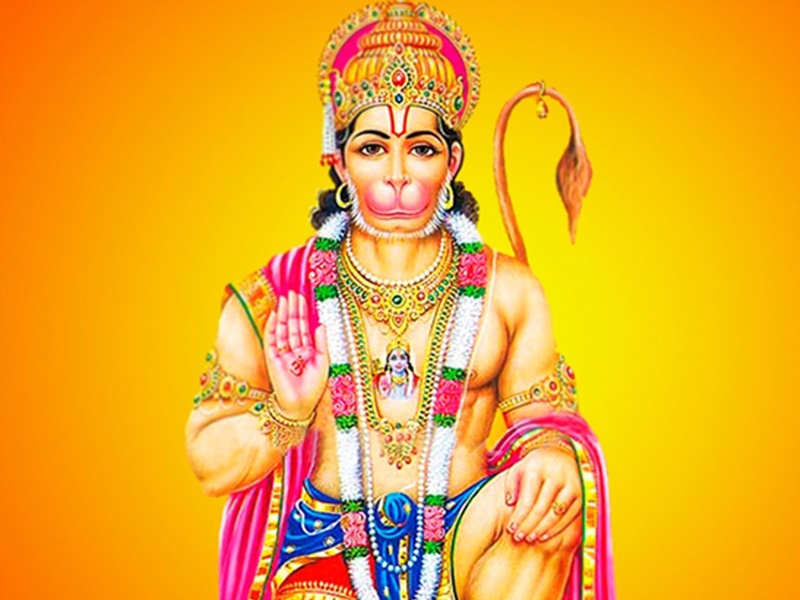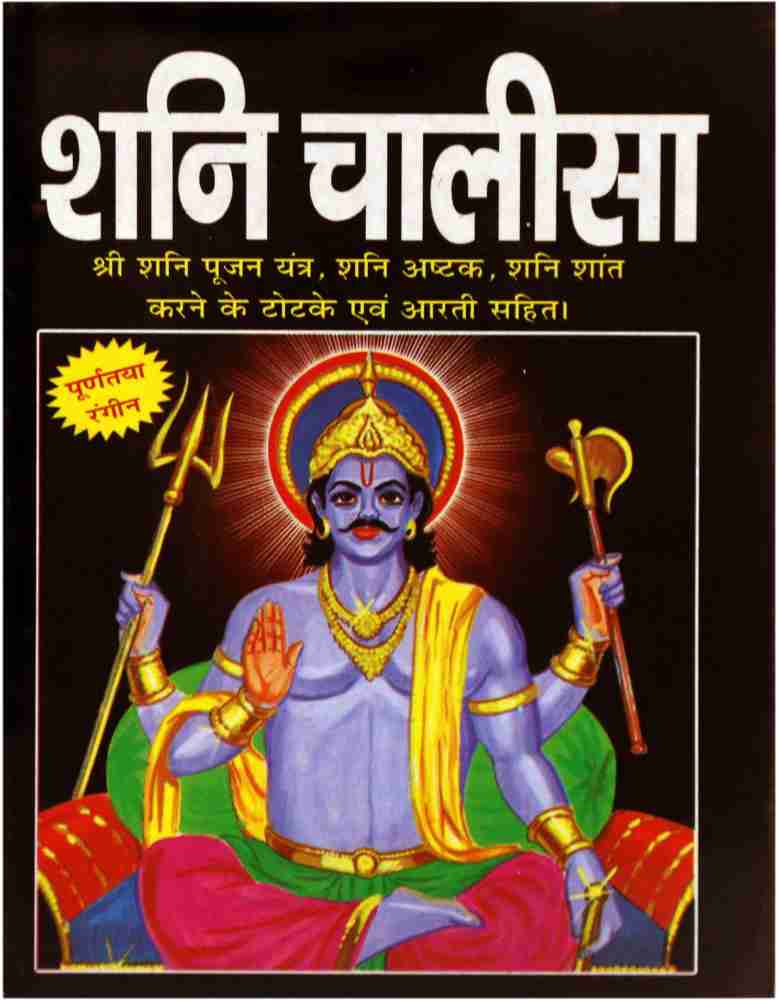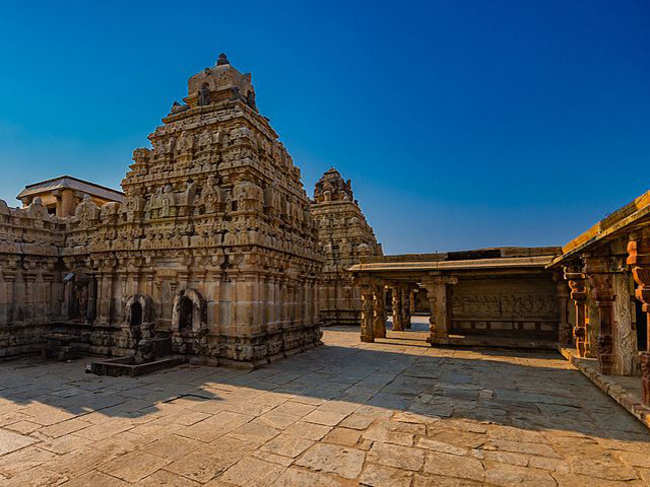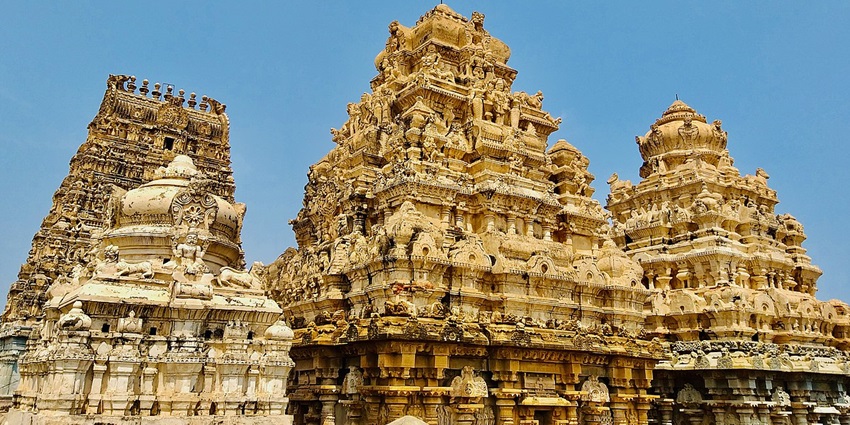
Hanuman Chalisa History
Welcome to our exploration of the Hanuman Chalisa, a powerful hymn that has been revered by countless devotees around the world. In this section, we will delve into the rich history and spiritual significance of the Hanuman Chalisa. We will explore the origins of this revered hymn, uncover the deep meanings behind its verses, and reveal the transformative power of its devotional practice.
The Hanuman Chalisa, consisting of 40 verses, is a hymn dedicated to the Hindu deity Hanuman, the embodiment of devotion, loyalty, and strength. The Hanuman Chalisa is said to have been composed by the poet Tulsidas in the 16th century, and since then, it has become one of the most widely-read hymns in Hinduism. The hymn is believed to invoke the blessings and protection of Hanuman, and is chanted by devotees across the world to seek his divine assistance in overcoming obstacles, gaining spiritual insight, and finding inner peace.
The Hanuman Chalisa’s verses are rich in symbolism and meaning, and through our exploration of this hymn, we hope to provide a deeper understanding and appreciation for its spiritual teachings. Join us as we unveil the mysteries of the Hanuman Chalisa, and discover the transformative power of this sacred chant.
Key Takeaways
- The Hanuman Chalisa is a powerful hymn dedicated to the Hindu deity Hanuman, the embodiment of devotion, loyalty, and strength
- Composed by the poet Tulsidas in the 16th century, the Hanuman Chalisa has become one of the most widely-read hymns in Hinduism
- The hymn’s verses are rich in symbolism and meaning, and are believed to invoke the blessings and protection of Hanuman
- The Hanuman Chalisa is chanted by devotees around the world to seek Hanuman’s assistance in overcoming obstacles, gaining spiritual insight, and finding inner peace
- Through our exploration of the Hanuman Chalisa, we hope to provide a deeper understanding and appreciation for its spiritual teachings and transformative power
Understanding the Hanuman Chalisa in English
The Hanuman Chalisa is a powerful devotional hymn that has touched the hearts of millions of devotees worldwide. While it is traditionally sung in Hindi, the hymn’s message is universal, and several translations in English are available for those who don’t understand the original language.
These English translations of the Hanuman Chalisa are widely accessible and enable individuals who don’t speak Hindi to connect with the hymn’s profound teachings. Several versions of the Hanuman Chalisa are available in audio and video formats, further enhancing the devotee’s experience.
Listening to the Hanuman Chalisa in English audio or video is an excellent way to immerse oneself in the hymn’s devotional vibration, even if one is unfamiliar with the language. The Hanuman Chalisa audio and video versions are widely available online and can be easily downloaded or streamed.
The Hanuman Chalisa in English mp3 format is an excellent option for those who wish to have the hymn on their device and listen to it anytime, anywhere. The mp3 format is compact and easily transferable, making it a popular choice among devotees.
The Hanuman Chalisa in English Translation
Several respected scholars and translators have taken on the challenging task of translating the Hanuman Chalisa into English, preserving the hymn’s essence and spirit. The English version of the Hanuman Chalisa is structured in forty verses, just like the original Hindi version.
The Hanuman Chalisa in English translation provides devotees with an opportunity to delve deeper into the hymn’s meaning. The English version of the Hanuman Chalisa retains the powerful message of the original Hindi version, making it accessible to a broader audience.
“Those who recite the Hanuman Chalisa with devotion will receive the grace of Lord Hanuman, who is the epitome of strength and devotion.”
The Hanuman Chalisa’s translation provides a powerful spiritual tool for individuals seeking to connect with the divine through the medium of this revered hymn. The translation’s message is clear and straightforward, allowing devotees to appreciate the hymn’s spiritual significance without being hindered by language barriers.
In conclusion, the Hanuman Chalisa in English is an excellent way to connect with the hymn’s spiritual teachings, even if one is not familiar with the Hindi language. The Hanuman Chalisa audio and video versions in English provide an even deeper experience of the hymn’s devotional vibration, allowing devotees to connect with the divine on a profound level.
The Legacy and Chanting of Hanuman Chalisa
As we continue to explore the Hanuman Chalisa, we must delve deeper into its legacy and the significance it holds in Hindu culture. Let us begin by understanding its origins.
| Who wrote Hanuman Chalisa? | The Hanuman Chalisa was written by Tulsidas, a 16th-century poet and saint from North India. |
|---|---|
| When was Hanuman Chalisa written? | Tulsidas wrote the Hanuman Chalisa in the Awadhi language in the early 16th century, around 1575-1625 AD. |
| Hanuman Chalisa in Hindi | The Hanuman Chalisa is widely popular in India and is chanted in its original Awadhi language or in Hindi translation. |
The Hanuman Chalisa carries a rich cultural and spiritual significance in India and is revered by millions of Hindus worldwide. This hymn encapsulates the qualities of Lord Hanuman, who is an embodiment of devotion, strength, and loyalty. Through the chanting of the Hanuman Chalisa, devotees seek his blessings and grace, which are believed to provide protection, strength, and fulfillment of desires.
Hanuman Chalisa Chanting
The chanting of the Hanuman Chalisa is a deeply devotional practice that is carried out by millions of Hindus worldwide. This practice involves the repetition of the forty verses of the hymn, accompanied by the lighting of a lamp and the offering of flowers and sweets to Lord Hanuman.
Chanting the Hanuman Chalisa is believed to bestow numerous benefits upon the devotee, including spiritual upliftment, emotional healing, and protection from negative energies. The vibration of the hymn is said to awaken the inner strength and courage of the individual, enabling them to overcome obstacles and challenges in life.
Overall, the Hanuman Chalisa is a powerful hymn that carries a profound spiritual and cultural significance in India. Its legacy continues to inspire millions of devotees worldwide, who seek the blessings and grace of Lord Hanuman through the chanting of this divine hymn.
Conclusion
Our exploration of the Hanuman Chalisa has revealed its deep spiritual significance and the profound connection it offers with the divine. Through our discussions of its history, translation, interpretation, and chanting practices, we hope to have shed light on the mysteries of this sacred hymn and its legacy.
The Power of Hanuman Chalisa
The Hanuman Chalisa is much more than a devotional chant. It is a spiritual tool that can be used to connect with the divine and to overcome life’s challenges. Through the devotion and strength embodied by Hanuman, the Hanuman Chalisa offers a path to transformation and self-realization.
A Journey of Spiritual Awakening
As we have explored in previous sections, the Hanuman Chalisa’s deep spiritual teachings and the devotional practice of chanting it have the power to awaken our spiritual consciousness and offer a profound connection with the divine. We encourage readers to embark on this journey of spiritual awakening and discover the transformative power of the Hanuman Chalisa.
A Final Note
As we conclude our article, we would like to express our gratitude for the opportunity to delve into the mysteries of the Hanuman Chalisa. We hope that our insights have ignited a deeper understanding and appreciation for this sacred hymn, and that readers will continue to explore its teachings and practices. May the blessings of Hanuman be with all of us on our spiritual journeys.
FAQ
What is the Hanuman Chalisa?
The Hanuman Chalisa is a sacred hymn dedicated to Lord Hanuman, a revered deity in Hinduism. It consists of 40 verses, written in Awadhi language, and is composed by the Saint Tulsidas. The Chalisa describes the virtues, accomplishments, and divine attributes of Hanuman.
What is the meaning of the Hanuman Chalisa?
The Hanuman Chalisa is filled with profound symbolism and teachings. It highlights Hanuman’s devotion, fearlessness, strength, and ability to overcome obstacles. It encourages devotees to emulate these qualities and seek Hanuman’s blessings for protection, courage, and spiritual growth.
Can I find the Hanuman Chalisa translated in English?
Yes, the Hanuman Chalisa has been translated into English. There are several versions available that aim to capture the essence and message of the original hymn in a language accessible to English-speaking readers. These translations can deepen your understanding and appreciation of the Chalisa’s teachings.
Where can I listen to audio or watch a video of the Hanuman Chalisa?
The Hanuman Chalisa is widely available in audio and video formats. You can find numerous renditions on various platforms, including websites, music streaming services, and video sharing platforms like YouTube. These recordings allow you to experience the melodic beauty and spiritual vibrations of the Chalisa.
When was the Hanuman Chalisa written and who wrote it?
The Hanuman Chalisa was composed by the 16th-century saint Tulsidas. It is believed to have been written in the 16th century, specifically in the year 1575. Tulsidas was a devout follower of Lord Rama and composed the Chalisa as a form of devotion and to spread the glory of Hanuman.
What are the benefits of chanting the Hanuman Chalisa?
Chanting the Hanuman Chalisa is believed to bring numerous spiritual and worldly benefits. It is said to strengthen faith, grant protection from negative energies, and eliminate fear and obstacles. Chanting the Chalisa with devotion can also bring clarity of mind, inner peace, and the blessings of Lord Hanuman.






